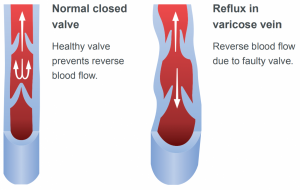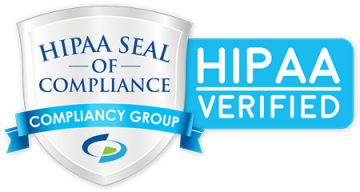Varicose Veins
Varicose veins are gnarled, enlarged veins. Any vein may become varicose, but the veins most commonly affected are those in your legs and feet. That’s because standing and walking upright increases the pressure in the veins of your lower body.
For many people, varicose veins and spider veins — a common, mild variation of varicose veins — are simply a cosmetic concern. For other people, varicose veins can cause aching pain and discomfort. Sometimes varicose veins lead to more-serious problems.
Varicose veins may also signal a higher risk of other circulatory problems. Treatment may involve self-care measures or procedures by your doctor to close or remove veins.
Symptoms
Varicose veins often cause symptoms in the legs including swelling, itching, throbbing, restlessness, aching, burning, cramping, tiredness and varicose eczema. They can bleed, especially in the elderly, after relatively minor trauma. The increased pressure often causes skin damage and, in some patients, actual ulceration of the skin occurs which can take months to heal without appropriate treatment.
Diagnosis
The only way to accurately determine the underlying cause of your varicose and thread veins is by having a colour duplex ultrasound scan performed on your legs. Without this full and detailed scan, it is impossible to properly assess your veins or determine the exact treatment you require. This is performed by our vascular and interventional radiologist who is a board certified imaging specialist.
Treatment
There are three main reasons not to ignore varicose veins and to get the underlying problem which is causing the increased pressure treated:
- Varicose veins are unattractive. Many people are seriously affected by the looks of their veins. They will not show their legs in public and indeed often even to their partner. This has an adverse effect on sport participation and enjoyment of holidays and other leisure activities. In some it can affect their careers and we have seen many actors and models (both sexes!) who “needed” their legs to look better. Most patients are delighted with the appearance of their legs after our treatments.
- Varicose veins hurt. As mentioned above it isn’t actually the varicose veins that normally cause the symptoms but the increased pressure. Nevertheless, most patients with varicose veins suffer from various symptoms which can also affect lifestyle. Common symptoms are tired legs, itchiness, throbbing, restless legs, and aching. These symptoms usually resolve very quickly after EVLA and RFA.
- Varicose veins can lead to serious skin damage and ulcers. Although most patients with varicose veins don’t get ulceration most leg ulcers are associated with varicose veins and caused by the same problem that causes varicose veins. Treating the varicose veins properly removes this cause and dramatically reduces the risk of leg ulcers.
The modern varicose veins treatment recommended to fix the underlying cause of varicose vein problems is either using Ablation or Foam Sclerotherapy. These are minimally invasive techniques performed under local anaesthetic on an outpatient basis that causes the abnormal veins to close.
The above information is not all inclusive of the risks, alternatives and benefits. It is not meant to be a substitute for informed discussion between you and your doctor, but can act as a starting point for such a discussion. There are complications possible with any medical procedure. Overall, minimally invasive procedures have a lower complication rate than open surgeries.





